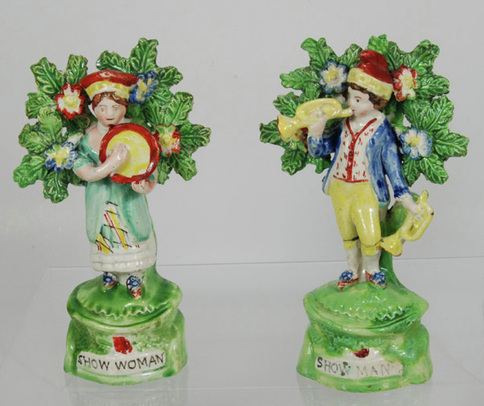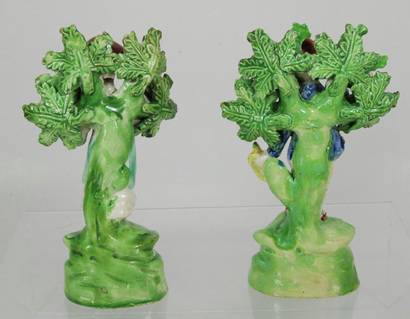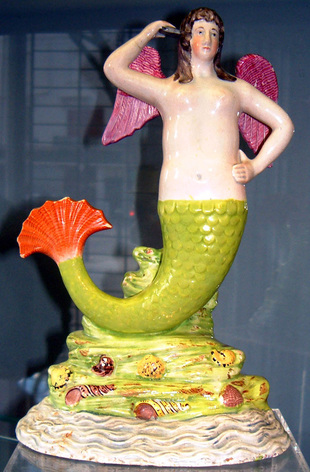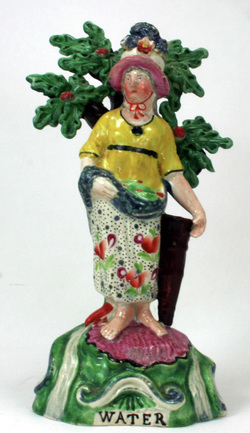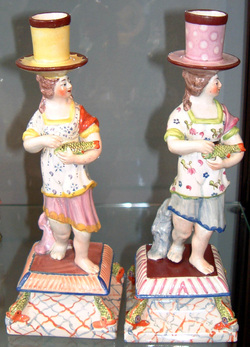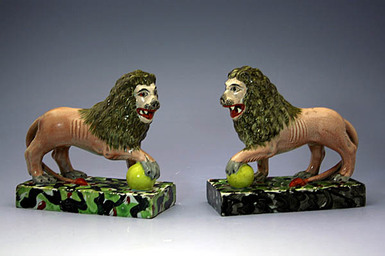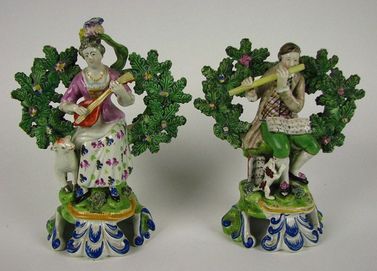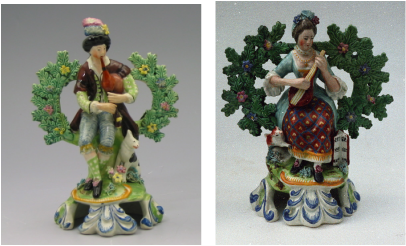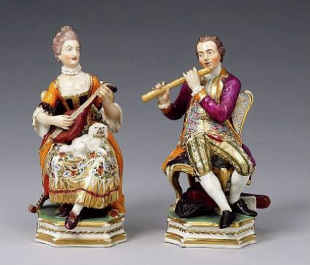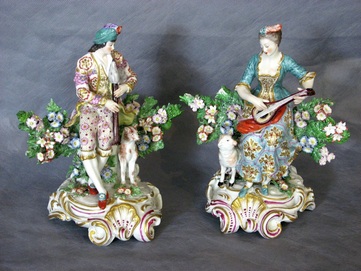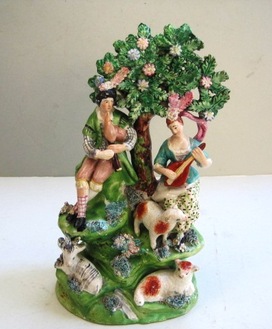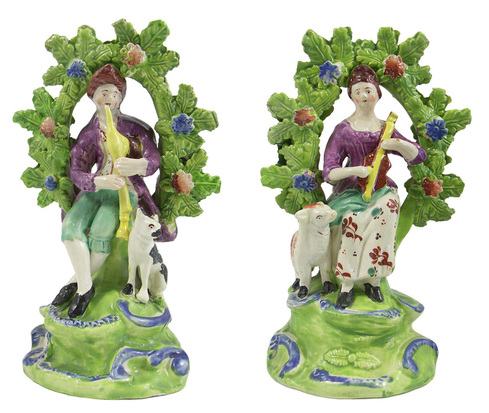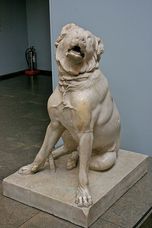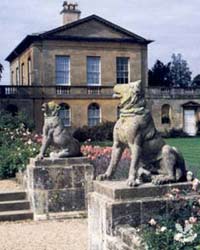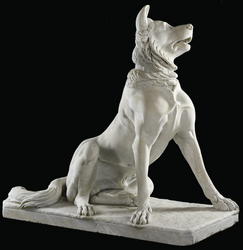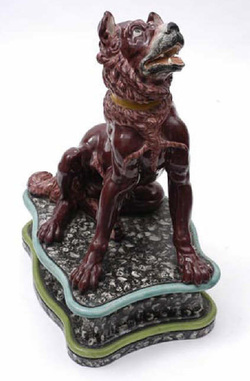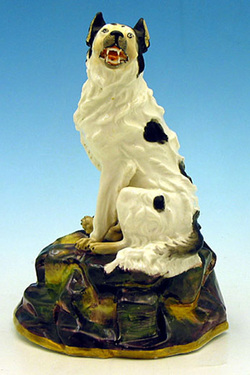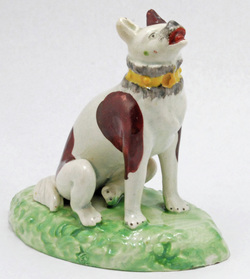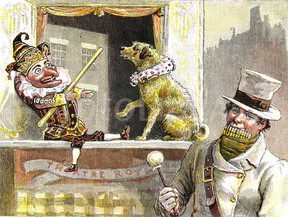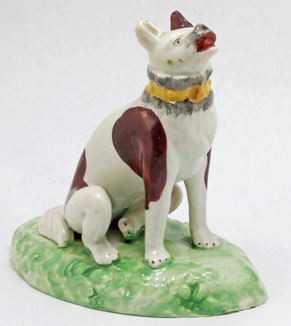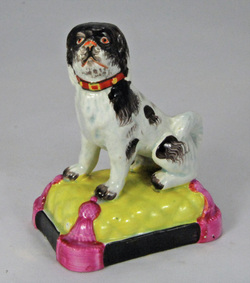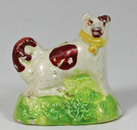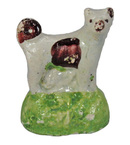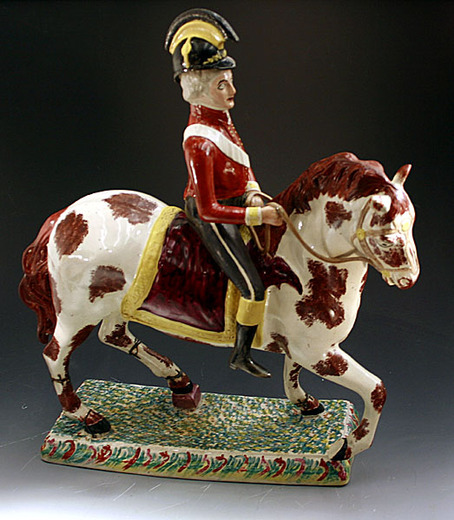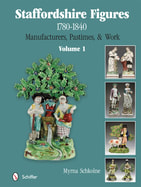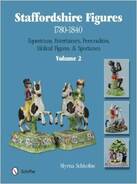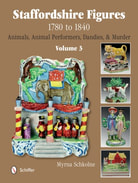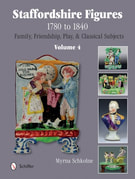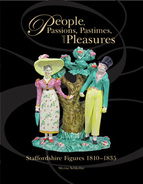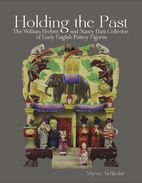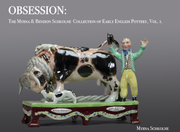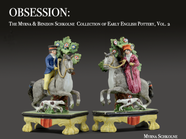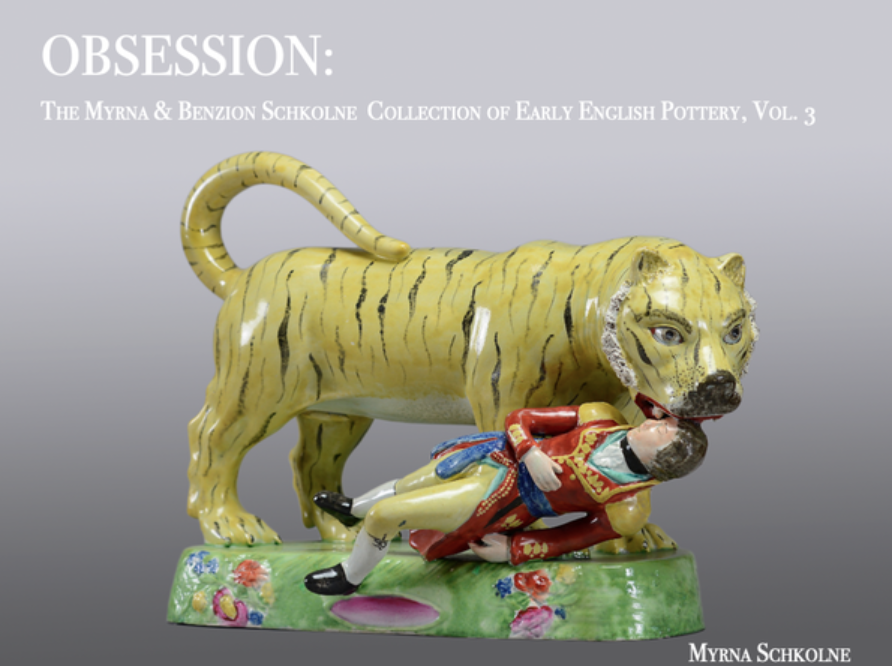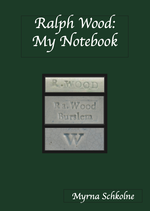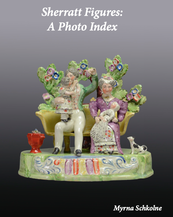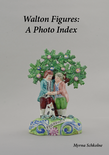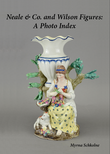Small, sweet bocage figures in good condition are very difficult to find--more so if you want a pair. The centuries have taken their toll. When this pair first came my way, I thought the enamels had misfired because they looked terrible. The bocage leaves were brown, a good tobacco shade of brown, and the spaces between the bocage leaves were filled with black fuzzy stuff. A life time of exposure to dirt, including a coal burning fire and tobacco smoke, had left their mark. These figures are made by the potbank that my friend Malcolm Hodkinson has dubbed "Big Flower" and Big Flower enamels are usually good, so I rolled up my sleeves and got going. I shan't confess how many hours it took to get these clean. I am sure the pros have a quick way, but for this amateur it was slow and methodical cleaning, aided by Q-tips, a soft toothbrush and a dental pick. Eventually, the figures glowed.
Restoration on these figures is minimal: one leaf tip and half a bocage flower on her; a few leaf tips and the end of the raised horn on him. Interestingly, I have lots of showmen in my archive, but not one holds two original trumpets. At best, the end of the raised trumpet is invariably restored.
